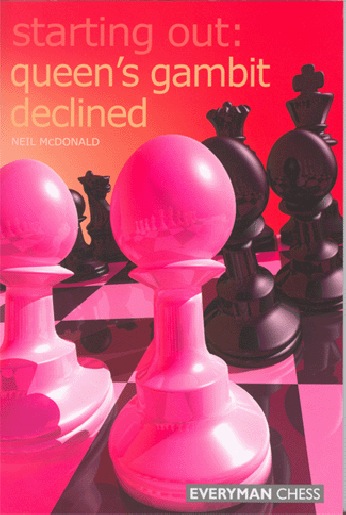Starting Out — The Queens Gambit Declined
Neil McDonald

These days there are so many books being published that is sometimes hard to keep track of what is what. Earlier this year Everyman Chess published Play The Queens Gambit by GM Chris Ward and Starting Out: 1.d4! by IM John Cox. The former dealt with all possibilities after 1.d4 d5 2.c4 including the Queen’s Gambit Accepted (2…dxc4) and Semi-Slav (2…c6 and 4…e6) while the later covered all options after 1.d4. Looked at another way, Ward had about 20 pages on the Exchange Variation of the QGD and Cox about 10 pages on the same subject.
Compare this to GM Neil McDonalds Starting Out: The Queens Gambit Declined, which has 36 pages on the same subject matter. The difference is that McDonald is dealing only with positions arising after 1.d4 d5 2.c4 e6 3.Nc3 Nf6. Besides the Exchange Variation, his book includes the Tartakover, Laskers Defense, The Classical Variation, Cambridge-Springs and lines where White plays Bf4.
Like most of the Starting Out series this volume offers more verbal explanation than the typical opening book. The emphasis is on explaining common ideas. This approach is particularly well suited to an opening like the Queens Gambit Declined, where theory moves slowly. Club players can study the chapters on the Exchange variation, 5.Bf4 and one of the individual defenses and feel confident they have what they need to know for a long time to come. Players up to 2000 will find a solid foundation to build on as McDonald steers them in the right direction. One example is in the Cambridge Springs where after 1.d4 d5 2.c4 e6 3.Nc3 Nf6 4.Bg5 Nbd7 5.e3 c6 6.Nf3 Qa5 7.Nd2 Bb4 8.Qc2 0-0 9.Be2 he suggests 9…c5 as a better way to handle the position than the Kasparov favored 9…e5.
In summary Starting Out: The Queens Gambit Declined is a solid introduction to a classic opening and is well suited for club players from 1400-2000.
